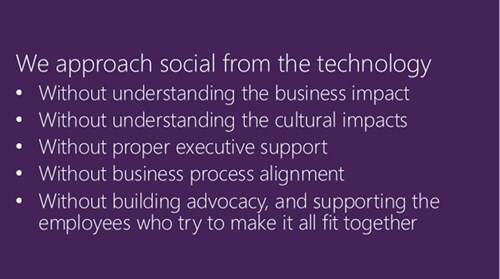In the previous articles we saw that process innovation declined with the wise definition of crowd sourcing and collective intelligence is a very important lesson learnt from Social Networks even more considering the new conversation patterns between user and systems enforced by context aware application, but what we can learn from implementation of such systems, which are the insights we can capture? Is there anything that can consider in our daily business? Can we run another trip over some common social networks features and consider the correspondents in our daily business? Let’s continue the journey with our new friend FourSquare using it as our playground to play and explore its technical features and we’ll see whether we can get inspired.
Obviously in order to have access to FourSquare, it is necessary having an account to authenticate on the application. Authentication is the process of being recognized and validated and as first time users we can decide whether we want to create a new account, providing all the details (…as we did more and more time during registration in other portals), or magically reusing our Facebook Identity and credential without having to retype again our personal details.
I won’t explain the technical details because it would be a long and detailed discussion, but it is interesting spending some time thinking about the simplicity and linearity of this process: in order to have access to FourSquare we are allowed to use FaceBook credentials. Today this is quite com and as further example, even Skype supports this approach and allow using a FaceBook indentity, a Microsoft one rather than creating a new one.
We can suppose that in some way the security architectures of both the applications are federated and they use the same security context and indeed they are!
Technically speaking we are talking of Single Sign On, where I can authenticate somewhere (for instance in FaceBook) and afterwards we can navigate in another sites who trust Facebook without having to provide again credentials.
Why this is important when we target business systems? Does logging on Windows and afterwards retyping different credentials for SAP sound’s familiar? At the end organization will face upset business users which in private life can use their social identity to authenticate on FourSquare from their mobile device and consuming TripAdvisor and MeetUp services seamless integrated whereas connecting to company Intranet from their laptop outside the corporate vpn is so painful and sometimes it requires to provide three different credentials. Is it just a matter of security? Or maybe the IT infrastructures are not designed to support technology federations due to silosed approaches?
The idea is not new, and for sure it is partially consolidated in business systems where Kerberos works exactly in this way. The innovation in case of Social Networks is that authentications and Single Sign On are based open protocols working over http and making the magic happens. The main ones are SAML to manage the security ticket and OAuth used to authorize access to data and web services.
If we have to do a comparison with Kerberos, such technologies are easier to be configured working on http protocols without requiring firewall configurations, there are a lot of resources in terms of
documentations, platform and even people available and nevertheless they are extensible. A Kerberos ticket is fixed, a SAML ticket is a container that can be augmented in order to carry our data.
Another interesting quality that should be considered is Multi-Channel capability. In order to reach the broadest audience FourSquare can be used by a classic web application running on a multitude of heterogeneous devices and of course from browsers, or you can download the FourSquare App from Apple, Windows, Google, etc. marketplaces. Obviously this can be taken for grant but let’s think for a while to some details. In the scope of the same solution FourSquare there are plenty of different Apps not identical and with slightly differences in order to better fit the target environment (iOS rather than Android for istance) or just because the specific lifecycle pace and adoption rate is different from the others. Today another raising buzzword is Appization, meaning the creation of cloud-based stores that sell small widgets, pieces of content, or streams and that eschew physical media entirely, and in the case of FourSquare the overall solution is built over a continuum of 2 different Apps, one targeting the consumer and the other targeting the business followed by an ecosystem of external specialized application developed by independent using the API. What we can learn as IT is that a big problem can be decomposed and supported by a group of smaller and specialized Apps. The classical example (…headache) is Time-Sheet and Expense Claim application. Is it better to provide and maintain a wide App covering all the required capabilities or is it better to decompose the problem in smaller chunks having very specialized applications enabling to fill the time-sheets, allowing the manager to approve/reject the expense notes, executing the people to scan and submission the expense tickets?
Such companies are continuously working on the evolution of their systems adding integrated or independent features to a set of subsystems and as soon as there are new capabilities available and successfully tested, they are rolled-out at production stage. This also implies that not necessarily all the Apps and the underlying systems are all at the same development stage and neither with the same feature set. Earlier a feature is used by user, easier a feedback is retrieved in order to properly enrich the overall solution. In order to achieve this, it is key to guarantee the consistency of the Internet Services (REST, SOAP) exposed among time and assessing and assessing again the backward compatibility in order to ensure the proper functioning of all the application versions.
The fact of having so many specialized Apps reaching a wide users Audience means as well having a huge amount of data collected by the platform as return. Here we are moving toward Big Data the technology trend of this year which is and it would be another long albeit interesting discussion. I prefer to point out that Big Data is a wide concept but the real aim of it is about prediction such as predicting market trend, decrease the customer churns ratio, running Social Analytics to evaluate the outcome of Digital Marketing campaigns. My personal feeling is that Big Data in common sense is mainly about infrastructure and the enabling technologies hence I think that focus and attention of IT should be on areally promising sub-branch which is Machine Learning which is targeting the construction of systems that can learn from data. As we can imagine Big Data and Machine Learning are essential components of FourSquare and they are used to run the Social Recommendation Engine as well as the Real-Time Suggestion tool which is based on the Social Graph.
Machine Learning are improperly considered far systems from daily usage since today so many effective development frameworks from Hadoop to Hive and tools make quite straightforward the development of such solutions. Looking around from Bing Traffic to Windows 8 Word Suggestion algorithm, from LinkedIn Maybe You Know to the Amazon suggested books are all example of Machine Learning implementations without having to explore the world of financial applications and hedge funds where ML system are widely used since years.
The new challenge is bringing such technologies to a mainstream adoption by business systems. Tools are available, knowledgeable people are out there working for startup, business is shaping the need. It’s up to us now as IT department answering to this call to action.
myTeamWorks were Silver Exhibitors at ESPC13. For more SharePoint content check out our resource centre!
Stay tuned for more SharePoint content by joining our community or by following us on twitter or facebook.











